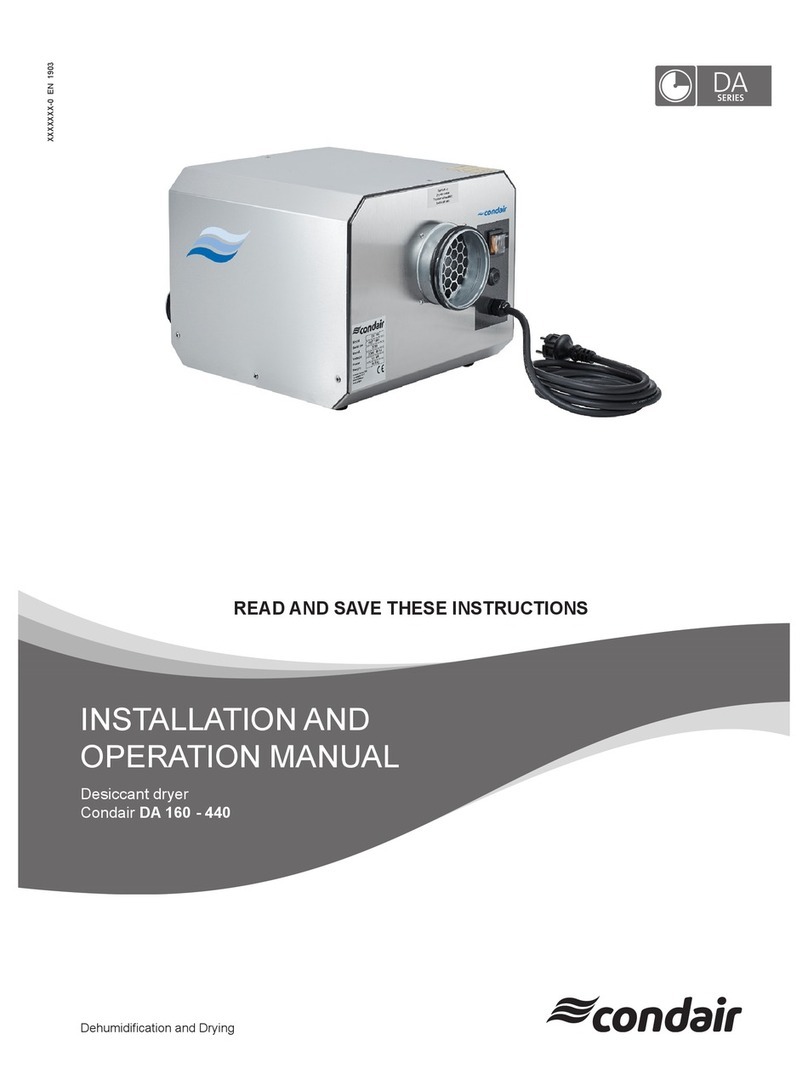
10 Product overview
4.2 Applications
The Condair desiccant dryers are based on the sorption principle (see description of the operating
principle in the installation and operation manual), which removes unwanted humidity from the air at
normal atmospheric pressure. With the Freezer version, Condair offers a special design for the device
sizes DA 500-4000, specially designed for use in the deep-freeze area. Compared to the standard DA
500-4000 dryer series, this device series has, among other features a 100 mm thick insulated AISI 304
stainless steel housing.
The desiccant dryer is designed for continuous operation and can be used at air temperatures from
-25 °C to +20 °C and humidity values of up to 100% RH.
Note: For operating conditions outside the above temperature range, please contact your Condair partner.
The Condair DA freezer units have been developed over many years and constantly been optimized
with regard to the aforementioned freezing temperatures. By completely eliminating critical thermal
bridges on the housing and by precisely matching key components such as the fans, the rotor and
the heating elements for example, high efciency and safety in system operation are optimized. The
special design allows the unit to be placed outside of the actual freezer area, where the installation of
the dryer often conicts with the storage area. By installing the dryer outside of the deep-freeze area,
valuable storage and useable space remain free. The application-optimized design of the Condair DA
Freezer desiccant dryer also eliminates the requirement for a complex and expensive installation of a
pre-heater. The Condair DA Freezer desiccant dryers are therefore the optimal solution for use in cold
stores, test rooms and applications with similar requirements, also in terms of cost-effectiveness, both
in procurement and operation.
4.3 Operation principle
The operation principle of the DA Freezer desiccant dryer is identical to that of the Condair DA 500-4000
standard devices. Please note the information in section 4.3 of the installation and operation manual for
the Condair DA 500-4000 desiccant dryer.































